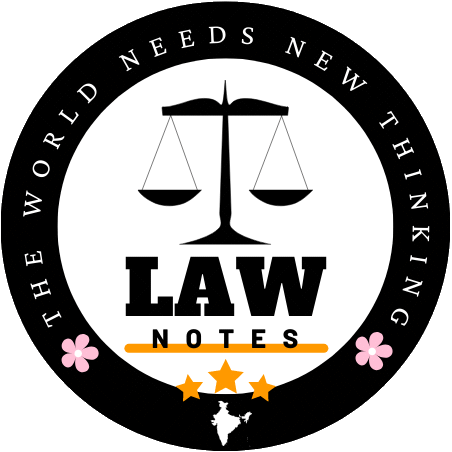Community and the law
Introduction
Community and the law are intricately connected, forming a symbiotic relationship crucial for the governance, order, and welfare of society. Laws serve as the backbone of any organized community, providing the framework within which individuals interact, resolve disputes, and uphold rights and responsibilities. This essay explores the scope, objectives, advantages, disadvantages, and challenges inherent in the interplay between community and the law.
Laws are essential for the functioning of society, serving as guidelines that regulate behavior, ensure justice, and protect fundamental rights. Communities, comprising individuals with shared values, norms, and interests, both create and are subject to these laws. The relationship between community and the law is dynamic, influencing societal development, shaping cultural norms, and maintaining social order.

Scope of Community and the Law
The scope of community and the law encompasses various domains crucial for societal well-being:
- Civil Rights: Laws protect individual freedoms such as freedom of speech, assembly, and privacy, ensuring that community members can live without fear of discrimination or oppression.
- Criminal Justice: Legal frameworks define criminal offenses, prescribe punishments, and establish procedures for fair trial, thereby safeguarding public safety and order within communities.
- Environmental Protection: Laws regulate the use of natural resources, pollution control, and conservation efforts, aiming to sustain ecological balance and preserve environmental quality for present and future generations.
- Economic Regulation: Legal statutes oversee economic activities, ensuring fair trade practices, consumer protection, and the regulation of industries to foster economic stability and growth.
- Health and Safety: Legal provisions establish standards for public health, workplace safety, food and drug regulations, and emergency response, ensuring the well-being of community members.
- Education: Laws mandate educational standards, curriculum requirements, and access to education, promoting literacy, knowledge dissemination, and intellectual development within communities.
- Family and Personal Law: Legal frameworks govern familial relationships, marriage, divorce, inheritance, and child custody, providing structure and protection in personal matters affecting community members.
Objectives of Community and the Law
The primary objectives of the interaction between community and the law include:
- Maintaining Order and Stability: Laws establish norms and regulations that promote orderly conduct, prevent conflict, and maintain societal harmony within communities.
- Protecting Fundamental Rights: Legal frameworks safeguard individual rights and freedoms, ensuring equitable treatment, and protecting vulnerable groups from exploitation or discrimination.
- Ensuring Access to Justice: Laws provide mechanisms for dispute resolution, ensuring that grievances are addressed fairly, and justice is accessible to all community members.
- Promoting Social Welfare: Legal statutes aim to enhance the quality of life by providing essential services, social security benefits, and healthcare provisions to support community well-being.
- Facilitating Civic Participation: Laws encourage community engagement in governance, decision-making processes, and public affairs, promoting democratic values and civic responsibility.
- Regulating Conduct: Legal norms establish behavioral standards, deter unlawful activities, and promote ethical behavior, thereby fostering a safe and conducive environment for community life.
Advantages of Community and the Law
Several advantages arise from the symbiotic relationship between community and the law:
- Social Cohesion: Legal frameworks establish common standards and values, fostering unity, trust, and a sense of belonging within diverse communities.
- Protection and Security: Laws provide protection against crime, exploitation, and abuse, ensuring the safety and security of community members.
- Dispute Resolution: Legal mechanisms offer structured processes for resolving conflicts, reducing the likelihood of violence and promoting peaceful coexistence.
- Economic Stability: Regulatory frameworks promote fair competition, consumer protection, and economic growth, contributing to community prosperity and stability.
- Environmental Sustainability: Environmental laws preserve natural resources, mitigate pollution, and promote sustainable practices, safeguarding ecological balance and community health.
- Empowerment and Justice: Legal rights empower individuals to seek redress for grievances, challenge injustice, and assert their rights, promoting fairness and equality within communities.
Disadvantages of Community and the Law
Despite its benefits, the relationship between community and the law also presents challenges:
- Complexity and Accessibility: Legal systems can be complex and difficult to navigate, posing barriers to understanding and accessing legal rights and remedies for ordinary community members.
- Inflexibility: Laws may be slow to adapt to evolving societal values, technological advancements, or emergent challenges, leading to gaps in legal protection or relevance.
- Inequality in Justice: Disparities in legal representation, access to resources, and enforcement of laws can perpetuate injustice and marginalize vulnerable or disadvantaged community members.
- Bureaucracy and Delay: Legal processes may be bureaucratic, resulting in delays in dispute resolution or justice delivery, frustrating community members and undermining trust in the legal system.
- Cost and Affordability: Legal proceedings can be prohibitively expensive, limiting access to justice for individuals with limited financial means and exacerbating socio-economic inequalities.
- Misuse of Legal Authority: Laws can be misused or selectively enforced by authorities to suppress dissent, discriminate against certain groups, or maintain unjust power dynamics within communities.
Challenges in the Relationship Between Community and the Law
Several challenges persist in effectively balancing the interests of community welfare and legal governance:
- Access to Justice: Ensuring equitable access to legal resources, representation, and remedies remains a significant challenge, particularly for marginalized or remote communities.
- Legal Awareness: Increasing legal literacy and awareness among community members is essential to empower individuals to assert their rights, navigate legal systems, and hold authorities accountable.
- Corruption and Accountability: Addressing corruption within legal institutions and ensuring transparency, integrity, and accountability in law enforcement are critical to upholding the rule of law and fostering public trust.
- Cultural Sensitivity: Legal frameworks must respect and accommodate cultural diversity, traditions, and values within communities to ensure laws are inclusive, relevant, and effective.
- Adaptation to Change: Legal systems must be agile and responsive to societal changes, technological advancements, and emerging global challenges while upholding foundational principles of justice and fairness.
- Balancing Rights and Responsibilities: Striking a balance between individual rights and collective responsibilities is essential for harmonious community coexistence, requiring nuanced legal frameworks and ethical considerations.
Conclusion
The interplay between community and the law is fundamental to the functioning of society, shaping norms, protecting rights, and fostering social cohesion. While legal frameworks provide structure and order, communities actively participate in governance, uphold legal norms, and hold institutions accountable. Addressing challenges such as access to justice, legal literacy, and cultural sensitivity is crucial for ensuring that laws serve the best interests of all community members. By promoting fairness, transparency, and inclusivity, the relationship between community and the law can strengthen, contributing to a more just, equitable, and resilient society.

